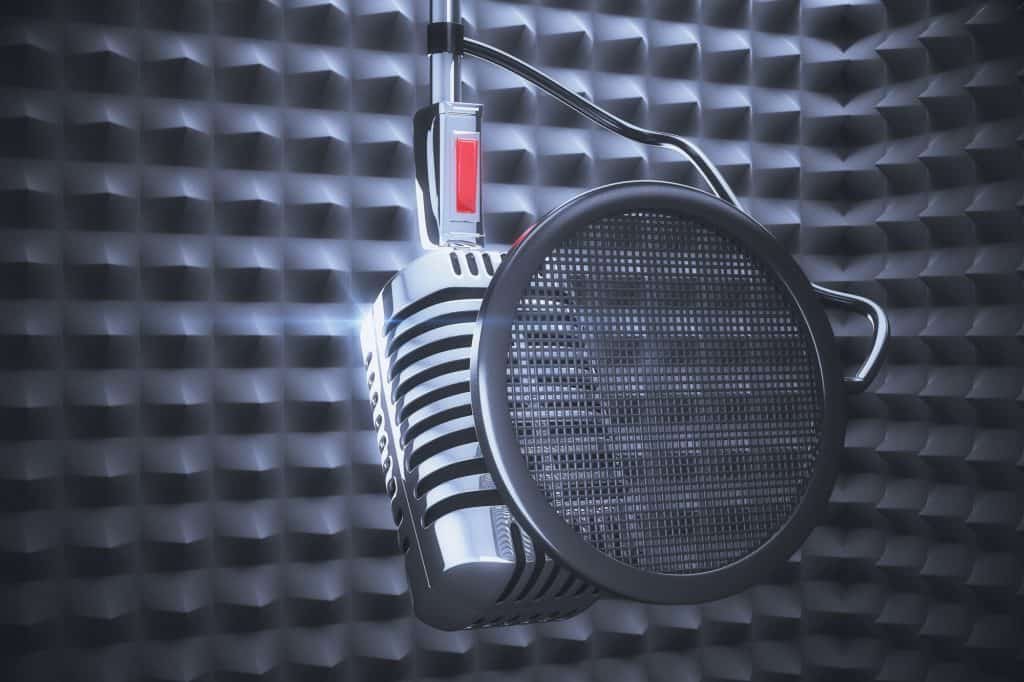This post is for authors who are interested in maintaining more control over their body work through self-publishing. The article shows a step-by-step process for preparing, creating, and selling your audiobook.
These are the general steps to help authors publish an audiobook on Amazon.
- Decide whether to use a professional narrator or narrate your own audiobook.
- Follow the instructions on Audiobook Creation Exchange (ACX) to either start working with a narrator or upload your completed audio files.
- Wait for ACX will proof your audio files and distribute them to Audible and iTunes.
This article focuses on Amazon and its audiobook companies Audible and ACX. Audible is Amazon’s online marketplace. ACX is the backend that allows authors to either pair up with narrators to create their own audiobook or upload the completed audio files.
How do you promote your audiobook? The simple answer is you’ll need to create an email list and involve you fans in the creation process. This process is quite time consuming but necessary.
Many authors don’t make money when they create an audiobook because they lack the skills to attract followers. This article, as well as several others on this site, discusses email marketing in much more detail.
How long does it take to produce an audiobook? Making the audiobook, from preparation through to sales, takes about 6 months. This is because some of the marketing, like building an email list, takes time. However, time spent in the initial phases of preparing your audiobook will result in higher audiobook sales.

Preparing Your Audiobook
Author Platform
Selling audiobooks is more difficult than selling ebooks. The reasons for this are that you cannot set the price for the audiobook, and you have little control over the release date.
Audible/ACX sets the price of your audiobook as a function of the length of the audiobook. For example, you can’t temporarily lower the price during a promotion. Also, they determine the release date, which occurs when they have completed their internal review of your audio files.
There are other marketing options available to you as well, they just take a little longer. In this section, I’ll discuss your options for your author platform like your website, social media sites, and email list building. I’ll also discuss the steps you should take to prepare your audiobook.
If you would like more information about how to promote and launch your audiobook, take a look at my article How to Launch an Audiobook.
Social Media
These days, it’s quite important to reach your fans where they hang out. You could try to connect on Facebook. At the writing of this article, Facebook is changing to a paid model where authors need to pay to reach their audience. If you’re more experienced with Facebook advertising, then use Facebook for your social media platform. If not, then move on to other platforms that don’t cost money.
The options I recommend are YouTube, Instagram, and Pinterest. Only choose one platform and pick the one you’re comfortable with. In addition, select the medium where you’re likely to find your followers.
Post information on these sites that you won’t find on your blog (if you have one) or your newsletter. You need to have a way to let your fans learn more about you and your audiobook.
If you would like more information about social media, take a look at my article How to Launch an Audiobook.
Website
Your website establishes one aspect of your author platform. This is the place your fans can learn about your previous and up-coming books. Your website also provides a central point where your followers can contact you with questions. There are some important elements that your website must have:
- Home page, which should sell your email magnet (more on that below)
- About Me page, which sells you as an author.
- Contact Me page, which lists all the ways your fans can reach you.
- Books page, which lists all of your previous books as well as upcoming releases.
- Blog page, which lists new information for your fans, such as book reviews.
If you would like more information about author websites, take a look at my article How to Launch an Audiobook.
Email Marketing
The purpose of email marketing is to have a direct line to fans who are interested in you as an author, as well as your books and audiobooks. The first thing to do is create an email magnet. This should be something your followers would love to have. Create something like a short story, prequel to your new novel, map of your fantasy world, or anything else.
Next, use an email autoresponder to offer your fans the email magnet in exchange for their email address. After they receive the offer, stay in contact with them by telling them about yourself or your recording process. You should also ask your email list open-ended questions that invite discussion.
Email once a week to once a month. Choose any frequency in between those two options that you’re comfortable with.
Whenever you have a new audiobook available, let your list know about it. However, I have more information in the following sections of this article.
If you would like more information about email marketing, take a look at my article How to Launch an Audiobook.

Audiobook Preparation
Before you upload your audiobook to Audible/ACX, you must first prepare. You need to have an eye-catching cover, an engaging description, and reviews from your fan base. I’ll assume that you already have an ebook and paperback book ready. If you don’t stop and get that done now!
If you would like to learn more about preparing your audiobook for sale, take a look at my article How to Sell Audiobooks.
Cover
Usually authors who are working on their audiobook cover already have an ebook and paperback cover. If this is the case, simply contact your cover designer and have them change the layout to 2400×2400 pixels.
If you don’t have an ebook and paperback cover, you need to start from scratch. There are a few things to keep in mind. First, the purpose of your cover is to catch your listener’s attention. Next, the cover has to convey the audiobook’s genre and say something about the audiobook.
For example, a sweet romance audiobook will have, at the very least, a young lady in a demure pose. This should convey that the audiobook is a romance and it’s about falling in love with no sex.
Description
If you have already written the description for your ebook and paperback book, then you can start with the same description for your audiobook. However, you’ll also need to do a keyword search (more on that in the next section). When you find new keywords, try to incorporate these new keywords into your description.
The purpose of the description is to sell your audiobook. The first sentence is your hook to get the reader’s attention. It also needs to make the reader continue scanning through the rest of the sales copy.
Keywords
Keywords or search phrases help your audiobook become discoverable by listeners, who are browsing through Audible. You can find those keywords by going to the search bar and typing something related to your audiobook. Type slowly and wait for the autofill. The search phrases in the autofill are your new keywords. You probably won’t be able to use them all but try to incorporate some keyword phases into your description.
Reviews
Reviews are important because they serve as social proof that your audiobook is worth listening to. I’ll cover in more detail how to get reviews in the last section of this article. Keep in mind that it’s your email list who will leave the first reviews. If you’re recording your own audiobook, you can get an early copy to them and ask for honest reviews once your audiobook is released on Audible.
If you have a narrator recording your audiobook, you’ll need to wait. However, as soon as possible, get copies of your audiobook to your email list and ask them to leave honest reviews.
If you would like to learn more about cover design, audiobook description, keywords, and reviews, take a look at my article How to Sell Audiobooks.
Creating Your Audiobook
There are two main options for audiobook production. You can use a professional narrator or you can narrate yourself. This section discusses both options in more detail.
How to publish an audiobook on Audible/ACX
Publishing on Audible/ACX is very straightforward if you take your time and follow all of the steps. If you would like more detailed information on publishing, take a look at my article How to Publish an Audiobook on iTunes. Otherwise, I’ve summarized the steps below:
- Verify that you have the audiobook rights.
- Create an audiobook profile for your narrator, which includes a description, audition script, and more.
- Select one or more narrators.
- Review the auditions.
- Make an offer to the narrator. On Audible/ACX, you can negotiate the narrator’s rate.
- Wait for the first 15 minutes of a recording of your audiobook. If the sample is okay, then continue to the next step.
- Review your completed audiobook. You can ask your narrator for up to 2 rounds of corrections. If you approve of the audiobook, then pay the narrator.
- Wait for Audible/ACX to approve your audiobook using their mastering standards.
- Promote your new audiobook.
If you agree to pay the narrator for their finished work instead of the royalty share option, then you’ll pay per-finished-hour. This refers to the length of the completed audiobook. For example, if the finished audiobook is 6 hours long and you agree to pay the narrator $100 per-finished-hour, then you’ll owe $600. If you would like more information on how to much it’ll cost to hire a narrator, take a look at my article How Much Do Audiobook Narrators Make?

How do you record yourself reading a book?
Recording your own book or a book from the public domain takes only 6 steps. These stages are general guidelines. They can cost thousands of dollars or they can be free. This entire website is for beginner authors and narrators, so I’ll always list free option when available.
- Set up your home studio. This should be a room in your house that is far away from the normal sounds of the house, like the refrigerator, air conditioner, heater, etc. This room also needs to be treated to reduce echo, which will lower the quality of your recording. This treatment can be as simple as tacking old materials (blankets, curtains, comforter, etc.) to the walls of a closet or small bedroom and placing blankets on the floor.
If you would like to learn more about creating a home studio, take a look at my article Audiobook Recording Home Studio Tips.
- Prepare your voice. Before you begin every narration session, take the time to warm up your voice. If you would like more information on how to prepare your voice, take a look at my article How Do You Prepare Your Voice Before Recording Your Audiobook?
- Position your microphone and begin narrating. The most important piece of equipment in your studio is your microphone. If you have a low-quality microphone, which distorts your voice, you probably won’t be able to improve the recording during editing and mastering. In addition, make sure the mic is 8-12 inches from your face, and you’re using a pop filter.
If you would like to learn more about recording your own audiobooks, take a look at my article How Far Should My Microphone Be From My Face?
- Edit your audio files. After you’ve completed your recording, you now need to listen to your audio files and check for extraneous sounds, loud breaths, etc. This phase takes a little longer than your recording, but, if done well, it’ll create a superior listening experience for your fans. If you would like to learn more about editing audio, take a look at my article 19 Audiobook Editing Tips.
- Proof your audiobook recording. This proofing process is your last chance to catch mistakes before the mastering. It checks that you have pronounced all of the words properly, you haven’t skipped any sentences, and more. If you would like to learn more about audiobook proofing, take a look at my article What is Audiobook Proofing?
- Master your audio files. This is the process that makes good audio sound great. One of the most important parts of mastering is to even out very dynamic audio. In this way, the loud parts of the audio aren’t deafening, and the quiet parts aren’t too low. After mastering, the listener won’t need to increase and decrease the volume settings to enjoy your audiobook.
If you would like to learn more about mastering audio files, take a look at my article How to Master an Audiobook.
Uploading Audio Files
Before you upload your audio files, verify they meet ACX’s top-level requirements. These include:
- Each file must contain one chapter, however each file cannot be longer than 120 minutes.
- One file must contain the opening credits which include the title, subtitle, author name, & narrator name.
- One file must contain the closing credits which should include the words “The End.”
- One file must contain a retail sample which is a sample recording for marking the audiobook.
- Each file must contain 0.5 to 1 second of room tone at the beginning and 1 to 5 seconds of room tone at the end.
- Each file must be free of extraneous sounds.
- Each file must meet ACX’s mastering requirements.
If you would like to learn more about ACX’s audio file requirements, check the ACX website article ACX Audio Submission Requirements.
Once you have your audio files ready, you can upload them to ACX. These are the steps to upload them:
- Open an ACX account or log in.
- Choose distribution territories and the language of your audiobook.
- Verify that you’ve mastered your audiobook to ACX standards.
- Enter your audiobook’s metadata (author name, description, title, copyright information, etc.).
- Upload your audio files.
- Enter bank information for future royalties.
If you would like more detailed information on uploading audio files, take a look at my article How to Publish an Audiobook on iTunes.
Email Marketing
Even though this stage of the article is focused on producing your audiobook, you still need to continue gathering more fans and staying in touch with your existing followers. It’s important to involve them in the process of creating the audiobook.
An example of staying in contact with your fans is having them vote on their favorite narrator when you start receiving auditions. Show your email list an image of your narrator once you have selected one.
If you’re narrating your own audiobook, you can tease little snippets of your recording or show pictures of you in your studio. You should also continue to share interesting information about you, your audiobook, or anything else that will be relevant to your audience.
If you would like to learn more about engaging your email list while preparing your audiobook, take a look at my article How to Launch an Audiobook.
Launch Team
Create your launch team about a month before your audiobook is ready for sale. This will be difficult to gage because your narrator needs a certain amount of time, and ACX’s quality assurance team also needs time. You’ll need to make your best guess.
Your launch team is a subset of your email list. They are the fans, who are interested in listening to your audiobook, and they’ve agreed to leave an honest review after they have listened to it.
Stay in contact with them at least twice a week. You should run giveaways, hold contests for the best promotion ideas, offer private consultation (non-fiction), or do any event that’s relevant to your list.
If you have recorded your own audiobook, your launch team could be your beta listeners. They can catch any mistakes you may have made, and they agree to leave a review when your audiobook is available on Audible.

Selling Your Audiobook
Distribution
Once your audiobook is ready, ACX will distribute your audiobook through Audible, iTunes, and Amazon. If you have agreed to an exclusive contract, you’ll receive 40% of the royalties from each audiobook sold. I recommend using Audible/ACX if you’re new to audiobook marketing. Since Audible and iTunes have a large share of the audiobook market, your audiobook will get more exposure to a larger audience.
In my article How Do I Distribute My Audiobook, I discuss in more detail how Audible/ACX helps authors distribute their audiobook.
Launch Day
Launch day is the release of your audiobook to Audible’s online store. If your launch team hasn’t received early listener copies of your audiobook, send them your giveaway codes. The way giveaway codes work, is you receive 25 codes for the US market and 25 codes for the UK. These codes allow listeners to receive a free copy of your audiobook.
The reason your launch team is receiving these codes is so that they can listen to your audiobook and leave a review. It’s important that you track fans, who received a code and then remind them to leave a review.
If your launch team has already received early listener copies, they are ready to leave reviews on Audible. Offer the giveaway codes to the rest of your email list. It’s important to continue to track fans who received a code and then remind them to leave a review.
If you have a little experience, you can also run Facebook Ads for 3 or 4 days to boost your sales. If you have never run ads before, now isn’t the time to learn. It’s very easy to lose money running advertising.
One more thing, don’t forgot your bounty links. These are links that you can use on your social media to promote your audiobook. The way it works is, once a listener new to Audible selects the bounty link, you receive $75. You’re paid if the listener remains subscribed to Audible for 61 days.
If you would like more information on promoting your audiobook, take a look at my article How to Launch an Audiobook.
How to Promote My Audiobook on Audible
Organic Traffic
Organic traffic on Audible isn’t really organic. Instead, it’s organized by the Audible algorithm. This means that on launch day, the algorithm will notice a lot of activity around your audiobook. This activity will trigger the algorithm to show your audiobook to more listeners who are browsing and that like audiobooks in your genre.
Thus, it’s extremely important that your cover is eye catching, your description is engaging, and your reviews are generally positive. Once all of the elements are perfect, the algorithm will do most of the work of selling your audiobook for months or even years into the future.
If you would like to learn more about obtaining organic traffic, take a look at my post How to Sell Audiobooks.

Website
Use SoundCloud to create a sample of your audiobook. Insert this sample into your email marketing, your social media channels, and anywhere else you think you’ll find fans.
These samples have the advantage of allowing your followers to get a taste of your audiobook. This is a simple way to get more fans.
If you would like to learn more about obtaining organic traffic, take a look at my post How to Sell Audiobooks.
Email Marketing
Use your email list to stay in contact with your fans. Weeks and even months after the launch of your audiobook, continue to put out content that will engage your audience, and continue to remind them about your audiobook.
You may not need your launch team once your audiobook has been released, but make sure your reward them with a gift for joining your team. Some ideas of a gift could be sending a copy of a book that you know they would like. You could also hold a live Zoom meeting and offer more giveaways during that meeting. Use your imagination and create a fun and inviting atmosphere. This way, they’ll be interested when you’re ready with your next audiobook.
If you would like to learn more about email marketing, take a look at my article How to Publish an Audiobook on iTunes.
Social Media
If you’ve stayed in touch with your listeners through Instagram or YouTube, this is the time to promote your audiobook. You should continue to add value to your social medial pages and channels, and at the same time, mention your new audiobook.
Add your bounty link in the notes below the video for YouTube. Also, mention any gifts or giveaways you’re holding for your email list. This has the advantage of continuing to grow your email list as well as attracting more fans.
If you would like to learn more about obtaining organic traffic, take a look at my post How to Sell Audiobooks.
Conclusion
Audible/ACX provides the best starting point for authors new to publishing audiobooks. ACX allows authors to either select a narrator or narrate themselves. If you choose a narrator, follow the steps listed above. If you record your own audiobook, you can simply upload the files and wait for ACX quality assurance to review your files.
In addition, Audible/ACX helps authors by providing giveaway codes that allow fans to listen for free and leave reviews. They also provide bounty links that allow the author to benefit from bringing new listeners to the Audible platform.
Have you used Audible or ACX to publish your audiobook? Let me know how you liked their service in the comments below.

